
Viola strings
Which are the best ones?
Buy Viola in Music's Collection of
13 famous tunes
Read more
Viola strings are another difference between violin and viola. The Viola strings names are A - D - G - C (from the highest to the lowest), one fifth lower that violin strings and are slightly longer and thicker. They are the same notes as the cello strings only one octave higher. There are some people who play five-string violas that include an E at the top.
The strings are a very important component of the instrument and can make a huge difference in its sound. There is no such thing as "the best strings" for any instrument, because every instrument is different and the strings have to match it, taking into consideration many other factors, such as the player, the environment, the instrument build, the type of music played and, last but not least, the strings price.
Here I'll discuss these matters a bit, with pro and cons of the different types, so to help you find your way in this maze (so many are the brands and types of viola strings that's easy to feel lost and confused after investigating this subject).
First, we need to know how strings work. The note (pitch) produced by a string depends on its density, length and thickness at a given tension. Therefore, to produce low notes, the strings have to be very long or thick and this could be pose the player a problem for very low notes.
A bit of history...
Initially, at the beginning of the history of the viola
and other string instruments, gut strings were made of plain gut but,
in order to increase the strings density and reduce their length and
thickness, it
seems that from the mid 17th century string makers started to use a
metal
wire wound around the gut in an open spiral, then a fully wound string,
as they are today.
Plain gut strings have been used, mostly for the higher strings, up to
the the mid 20th century. Now plain gut viola strings are used for
players who use so-called "period" instruments, that is mounted as they
were in 17th-18th century.
How to choose between gut strings, metal strings
and synthetic strings?
The material of which viola strings (as well as all other strings) are
made is the first and biggest difference among them. The words gut,
metal and synthetic refer to the string core that can be wound with different metals (not
together, though) like aluminum, silver, gold, titanium, nickel,
chrome, tungsten.
Gut strings are made of sheep gut and, together with synthetic core
strings, are generally preferred in classical music, while metal
strings seem to be the choice for folk styles.
Characteristics of different types of strings
- Gut strings
are more flexible
than synthetic and, especially, metal strings. They have a warm, rich sound,
they are soft under your fingers, but respond a bit more slowly than
other materials strings. They are more likely to produce a harsh tone
if you don't treat them gently. They resent the humidity
and heat so get easily out of tune in climates with these
characteristics or simply when the weather changes from dry to rainy.
When they are new, they need more time (several days) to settle before
the tuning is stable; they are also more delicate and tend to break
more frequently, especially the high notes strings. They are more
expensive than other materials.
- Synthetic strings have characteristics similar to gut strings without the disadvantages. When they are new, they settle in a few hours, their tuning is more stable and they respond more quickly. They too may resent the humidity and heat although in a much lesser degree than gut strings.
- Metal strings
generally are far more robust than gut and synthetic strings, have a
more powerful and bright
sound, they settle nearly immediately when you put them on and their
tuning is very stable. On some instruments they may sound a bit
metallic (as the word says) and some players find them hard under their
fingers. They do not resent humidity
and heat and hardly ever break. They are far less expensive than other
materials.
Gut and synthetic strings can be tuned from the pegs, metal strings require fine tuners, those little screws you may have seen placed on the tailpiece, because metal strings need minimum changes of tensions to get up to the right pitch.
Match the strings to your viola
Each instrument is different so has different needs in terms of strings. Here is some general information.
All strings come in different gauges/tension (light,
medium, heavy) and some makers produce viola strings in different
lengths.
- Thinner strings require lower tension, thicker strings require higher tension.
- Low tension strings respond more quickly than higher tension ones.
- Higher tension means more pressure, more weight (actual kilos or pounds) on
the viola top. This is something to consider if an instrument is old,
fragile, made of thin wood or has been repaired.
- Generally a medium
gauge (thickness, therefore tension) is a good initial choice.
- If an instrument tends to have a bright sound you can mitigate this with strings having a warmer sound and, vice-versa, if an instrument has too a dark sound this can be corrected by using strings with a brighter tone.
Generally, old
instrument are mounted with gut strings and modern
instruments are mounted with synthetic and metal strings.
Experiment with different types of strings
To me, finding the right strings it's always a bit annoying, you have to try one type, then change, try another, and so on, with several types and brands but it is somenthing you need to do.
I tried different types: I started as a student with metal strings, Spirocore, partly because my
teacher used them and suggested them, partly because I had a new
instrument and they say metal strings are good to open up a new
instrument.
Then I wanted to try gut
strings (Eudoxa with Aricore A); I liked them, they were soft and with
a beautiful tone but they broke too often (sometimes after two months)
and this became too expensive for me, being a student.
Then I tried synthetic,
Dominant, but my instrument didn't sound well with them; then Prim,
they were quite good but for some reason I changed again (maybe they
were no longer available) and went back to Spirocore.
Meanwhile, over time the instrument changes and may sound differently
even with the same strings used years earlier.
Finally, more recently I tried Obligato and I'm still using them. I
also have a baroque viola for
which I've used both all plain gut
strings (Aquila and other brands I can't remember) and plain and wounded gut strings,
Chorda.
Plain gut strings are not at all easy to play at the beginning, they resent even the slightest mistreatment.
When I first played Mozart's
Sinfonia Concertante for violin, viola and orchestra, I was in
doubt about what to do, because it requires a
scordatura, that is, the viola has to be tuned a semitone higher than normal
and I was worried that the extra pressure could damage the instrument,
a modern one.
So I asked my luthier and even wrote to Pirastro asking them. They
replied that Obligato, or gut strings, thin or medium gauge, were not
going to be a problem.
I don't mean to say that
the strings I use are the best ones, they are good for me and my viola
at this time of our life, I'm pretty sure sometime I'll change type
again.
So, if you too don't know which way to turn for your viola strings,
it's always good to start by asking someone more
knowledgeable than you, such as your teacher or luthier, which strings
would be more appropriate for your type of instrument, then choose
according to your taste and preference for the resulting tone.
In the strings descriptions, you can also find useful indication about the type of sound they strings will produce.
Viola Strings Tips
Some people develop an allergy to nickel (or even to other metals), so they need to avoid these strings. So, if you feel discomfort or notice something unusual on your fingertips, be aware that this can happen.
Save money: if you
buy a whole set of viola strings, you spend less than if you bought the
four strings separately.
Rub a soft pencil
in the nut and bridge grooves so the strings can glide into them,
preventing breaking. Also pay attention that the C and A strings don't
touch the peg box inside; if they do, put something like a tiny piece
of paper between the strings and the wood, to prevent them from
scratching against the wood and breaking.
Every now and then, untune your
strings, in the evening, up to an octave lower; let the viola
"have a rest", be released from all the tension and weight caused by
the strings onto its body. The next day tune it again as normal and
you'll hear the difference.
When you replace a string, pull it
very slowly from the pegs, especially metal strings. Leave the
string time to stretch little by little, play it a bit, then pull it
again until it settles and stays in tune (it may take hours or days).
With metal strings use the fine
tuners otherwise you risk breaking them very
easily.
When do I need to replace my strings?
Generally, it's better to have all four string of the same material and brand and replace them all at the same time.
How often to replace the strings depends on how long you play, whether you play many hours a day or just a few a week.
However, strings need to be replaced even if they don't break, because, due to the tension they have to stand, with time they will lose flexibility and their perfect intonation. This can be noticed especially when tuning: it's very difficult, even impossible, to have perfect fifths.
Before an important event (a performance, an exam or audition) put all new strings, but not the day before! Allow a week or even more (with gut) for the strings to settle properly and you and your viola to get accustomed to them. There is always a noticeable difference between the old and the new ones.
Anyway, I'd say even if you don't play a lot, change them at least once a year.
It's a good idea to keep old strings for emergency situations, especially with gut and synthetic strings: if one string breaks just before or, worse, during a concert or exam, the new one will go out of tune every few minutes and this would be a nightmare in such important situations (I've seen this happen!). Instead, an old string won't require a lot of time to settle and its tuning will be stable almost immediately.
More Information on Viola Strings
To help you choose the best
strings for you and your viola, I have collected here some free information booklets
on the
different string brands for you to download. Unfortunately, only a few
makers provide these useful booklets, others have information on their
websites. They contain
indications as to strings characteristics, the quality of tone produced
(warm, bright), the right string length for different instruments size.
D'Addario tension chart for viola strings
Pirastro viola strings information
Thomastik-Infeld viola strings information
For more information on different types and brands, here are links to
some string makers' websites:
Aquila (historical gut strings, synthetic
strings)
D'Addario (synthetic: Zyex, metal: Helicore,
Prelude, Kaplan. Pro Arte)
Dogal Strings (metal)
Larsen
(metal)
Jargar
(metal)
Pirastro
(gut: Olive, Eudoxa, Passione, Chorda; synthetic: Evah Pirazzi,
Obligato, Tonica, Synoxa, Aricore; metal: Passione, Permanent,
Chromcor, Piranito)
Prim (metal)
Rotosound (metal)
Super Sensitive (synthetic: Sensicore, metal:
Pinnacle, Octava, Premium, Red Label)
Thomastik-Infeld (synthetic: Dominant, Vision;
metal: Prazision, Belcanto, Spirocore)
Now if you need strings, buy your viola strings here
Go from Viola strings to Differences between violin and viola

Tweets by @MonicaCuneViola

Play easily without pain &
nerves
Related pages
 Read the book "Stage fright - Causes and cures", by Kato Havas, and play freely
Read the book "Stage fright - Causes and cures", by Kato Havas, and play freelyBuy Viola in Music's Collection of 13 famous tunes (19 pages)
£7.99 and download them instantly
They are in their original keys, so you can play them in sessions with other instruments
Jesu, joy of man's desiring
Michael Turner’s waltz (2 versions)
The
greenwood tree
The south wind
Fanny Power
Ye banks and braes
Skye boat song
My Bonnie
My love is
like a red, red rose
Sportsman’s hornpipe
The road to Lisdoonvarna
Danny Boy (Londonderry Air)
Iron legs
Do you like
Viola in Music?
Support it by buying sheet music here
Download Sheet Music
|
The beautifully simmetric
alto clef or viola clef or C clef
Differences between
violin and viola










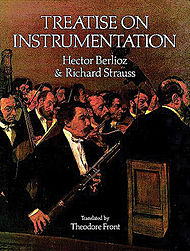



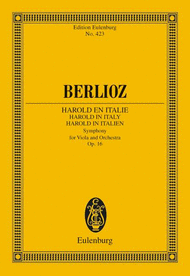
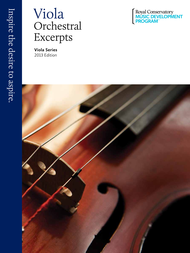







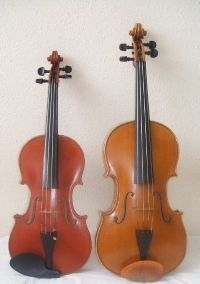
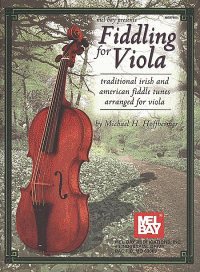
New! Comments
Have your say about what you just read! Leave me a comment in the box below.